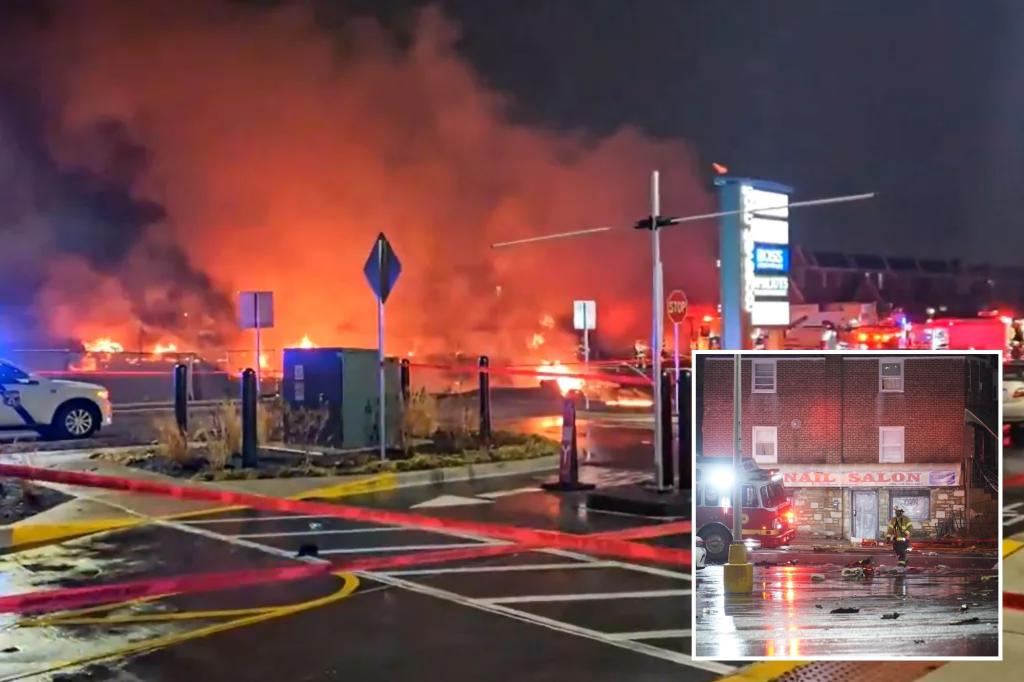The skies over Philadelphia witnessed another aviation tragedy just days after a fatal mid-air collision near Reagan National Airport. On Friday evening, a medical ambulance plane, a Learjet 55 operated by Jet Rescue Air Ambulance, crashed shortly after takeoff from Northeast Philadelphia Airport, claiming the lives of all six individuals on board. The chilling audio recordings from the air traffic control tower capture the confusion and growing concern as controllers realized the aircraft had vanished from their radar. Initial calls of “What’s going on down there?” quickly escalated to the grim acknowledgment of a “lost aircraft” and the immediate closure of the airfield.
The Learjet 55 was en route to Springfield-Branson National Airport in Missouri, carrying a critically ill pediatric patient, her mother, and a medical team consisting of a physician and a paramedic. The flight crew comprised a pilot and co-pilot. All six individuals on board were Mexican nationals. The young patient had been receiving life-saving medical treatment in the United States and was being transported back home after completing her treatment. The abrupt end to this journey marks a tragic conclusion to what was hoped to be a return to familiar surroundings. The incident raises immediate concerns about the safety protocols and potential contributing factors that led to the devastating crash.
Preliminary analyses of the crash, based on video footage and the manner in which the aircraft impacted the ground, suggest a takeoff stall as the likely cause. John Anderson, a retired pilot from Philadelphia, offered his expert opinion, highlighting the uncontrolled nature of the descent. He distinguished the incident from a controlled flight into terrain (CFIT), suggesting instead a potential mechanical malfunction within the aircraft’s control systems, such as the stabilizer, elevator, or trim. Another possibility raised by Anderson involves a load shift within the cabin, specifically mentioning the potential for an unsecured medical stretcher to roll rearward during takeoff. Such a shift could drastically alter the aircraft’s center of gravity, leading to a nose-up attitude and a subsequent stall.
A stall occurs when the angle of attack of the wings exceeds a critical point, disrupting the airflow and causing a loss of lift. This can happen at various airspeeds and altitudes, including during takeoff. In this scenario, the sudden shift in weight distribution towards the rear of the aircraft could have induced a stall shortly after liftoff. The nose of the plane rising sharply, followed by a rapid descent, as observed in the video footage, aligns with the characteristics of a stall. Furthermore, a runaway trim, a malfunctioning stabilizer, or other mechanical issues affecting the aircraft’s control surfaces could have contributed to the loss of control.
The investigation into this tragic incident is ongoing, and it will likely involve a meticulous examination of the wreckage, flight data recorders if available, and maintenance records. Determining the precise cause of the crash will require a comprehensive analysis of all potential factors, including mechanical malfunctions, human error, and environmental conditions. The data gathered from the air traffic control tower, witness accounts, and any available video footage will also be crucial in piecing together the events leading up to the crash.
This latest aviation disaster underscores the inherent risks associated with air travel, particularly in the context of medical transport, where time-sensitive situations and specialized equipment add another layer of complexity. The investigation’s findings will be crucial in identifying any systemic issues or operational deficiencies that may have contributed to the crash and in implementing necessary safety measures to prevent similar tragedies from occurring in the future. The families of the victims, as well as the aviation community as a whole, await the results of this investigation with heavy hearts and a collective hope for increased safety and accountability within the industry.

